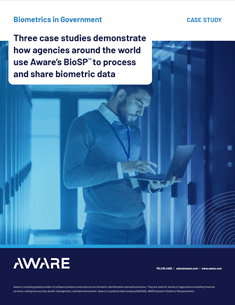It’s 6pm and your plane has finally landed at London Heathrow Airport. The grueling 6-hour flight from Boston to London is now over and your vacation can finally begin. The COVID-19 pandemic and lockdown restrictions significantly hindered your international travel plans! All that aside, you are eager to see your sister and her family and have fun in one your favorite cities. Enthusiastic; you rush out of the plane and make your way to border entry. Immediately, you are taken aback by the long queue full of families and children. No matter, your biometric passport arrived just in time for this trip, so you quickly hop in the short queue for the ePassport gate! The process is immediately shortened by having your identity verified by facial recognition technology. Luggage now in tow, you make your way to the pick-up point at terminal 4 where your sister is patiently waiting outside.
If you’re a frequent international flyer, you are probably over-familiar with the border entry process. You may be used to these automated border control systems, but have you ever thought about the rationale and technology behind it? We appreciate the efficiency, but do we understand its significance? Those moments you spent at that kiosk helped ensure national security. After all, the ability to identify individuals coming into and exiting a country is a matter of national security.
eGates leverage technology to electronically process border crossings
An eGate is an automated border control system—a self-service barrier that uses data stored in a chip located in your biometric passport to verify your identity and let you cross. It does this through comparing a photo or fingerprint taken at the time of entering the eGate to the passport holder’s biometric data stored on the chip. After the identity verification is complete, the gate opens and allows for entry.
Border control is a global issue
Within the US, Customs and Border Protection introduced biometric entry-exit process to expedite safe and secure travel. Within the US, Customs and Border Protection introduced biometric entry-exit process in many international airports to expedite safe and secure travel. These biometric entry-exit processes use a facial comparison for a touchless verification process that reduces the sharing of documents and spread of germs.
A similar approach is taken in Europe through the European Union’s (EU) project FastPass. EU passports have digital imaging and fingerprint scan biometrics placed on their RFID chips so citizens can simply scan their passports at eGates to get through border protection and customs. FastPass aims to create an even higher level of security and protection against fraudulent identification.
Within the UK, ePassport gates are operated by the UK Border Force and are located at immigration checkpoints in arrival halls. These gates offer an alternative to using desks staffed by immigration offers and use facial recognition technology to verify the user’s identity against the data stored in the chip in the biometric passport. Citizens from the United States, Canada, the European Union, Australia, and New Zealand can use these ePassport gates if they are 12 years or older.
In Singapore citizens, permanent residents and other registered travels can use the enhanced-Immigration Automated Clearance System (eIACS) for a streamlined entry and exit procedure at checkpoints. Additionally, foreign visitors with registered fingerprints can use eIACS during exit clearance.
How it all works
An automated biometric identification system or Civil ABIS is used for large-scale biometric identification and deduplication. A civil ABIS stores and searches biometric data enrolled from a civilian population for applications such as citizen credentialing and border management. Its purpose is to compare one biometric sample (e.g., fingerprint, face, or iris) to those of everyone else in one or more databases to retrieve that record in the database. In this way, the claimed identity of the individual can be confirmed, their presence in a watch list can be detected and duplicate identities can be prevented. For government officials considering revamping their border control efforts, AwareABIS™ is a good option. It supports fingerprint, face, and iris recognition for large-scale biometric identification. Its modular architecture helps security teams configure and optimize the system for civil or criminal applications.
For more information about AwareABIS™ and our Citizen ID solutions, you can learn more on our website or contact us below.
